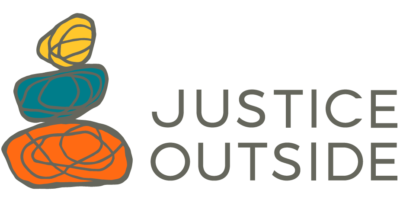The calendar tells us it is a new year. With the simple act of turning the page on a calendar, we both become aware of the passage of time and pin hope to the newness of the time.
As I sit in my own personal reflection, I find myself thinking about the sermon that Rabbi Gray Myrseth gave during Rosh Hashanah (Jewish New Year) this past October.
Identifying as queer, the Rabbi recalled their reaction to their first look at a page of Talmud at rabbinical school: “What have I gotten myself into?”
“Talmud was a puzzle, a code to which I had only fragments of the key. I believed it was amazing because people I trusted assured me it was, but I didn’t know what it had to do with me.”
Thanks to a patient, trusted teacher, “I was suddenly able to see what it was we were learning … I saw the way conversations happened across generations of sages, creating a time-traveling fellowship of opinionated nerds.
This text…was so undeniably queer that at first I hardly believed what I was seeing. When I say queer, I do mean queer like those whose gender and sexuality aren’t straight, aren’t binary, aren’t quite what most people expected or imagined. But that’s not all I mean. I mean the queerness that belongs to all of us on the margins. All of us who live out our truth in a world that didn’t see us coming.
Queerness was not something Judaism tolerated or shifted in order to accommodate. Queer people owning and creating Jewish tradition was not something that had happened in the past few years or decades. Marginal people owning and creating Jewish tradition was not new or tenuous or anything that could be stopped. What I had previously perceived as a recent innovation actually went all the way down to Judaism’s roots.”
Instead of being overwhelmed, Rabbi Gray found clarity around how Talmud was connected with their own personal journey and understood that they were not walking alone.
As I listened to the Rabbi talk, I found myself nodding, not because I understood Talmud, but because I understood that moment of feeling as if you are in over your head because of your commitment to something that you care about deeply.
When I think about my journey to weave outdoor and environmental opportunities into the lives of all youth, I often echo the Rabbi’s concern inside my head: “What have I gotten myself into?”
Nature does not discriminate based on race or gender identity or ethnicity, but somehow this relationship has been redefined. The narrative has been rewritten to distort the truth and serves as another means of separation and exclusion. The hard questions that need to be asked and system-wide changes that need to happen can be daunting.
But I remind myself that this is not the first time this conversation is taking place and that my journey doesn’t have to be a lonely one.
Connections to nature run deep in the lives of black, immigrant and indigenous people across time and geographies. There are many who have cried out for change before us. It is critically important that we share their stories and recognize that we are part of a longer history. There is power in this clarity and returning to our roots.
We also don’t have to be in this alone. We must reach out to allies and seek opportunities for connection. We need to see them and remain open to each other and ourselves. As Rabbi Gray said in their sermon, “Crying out invites accompaniment, companionship, solidarity.”
Let’s use 2019 as a time to come together and cry out, so we can do the work that brings us towards the world we want to live in, step by step, one outstretched hand at a time.
I am excited to see what our community and connections can make possible.
* * * * * * *

Photo by Cristina Cerda on Unsplash

